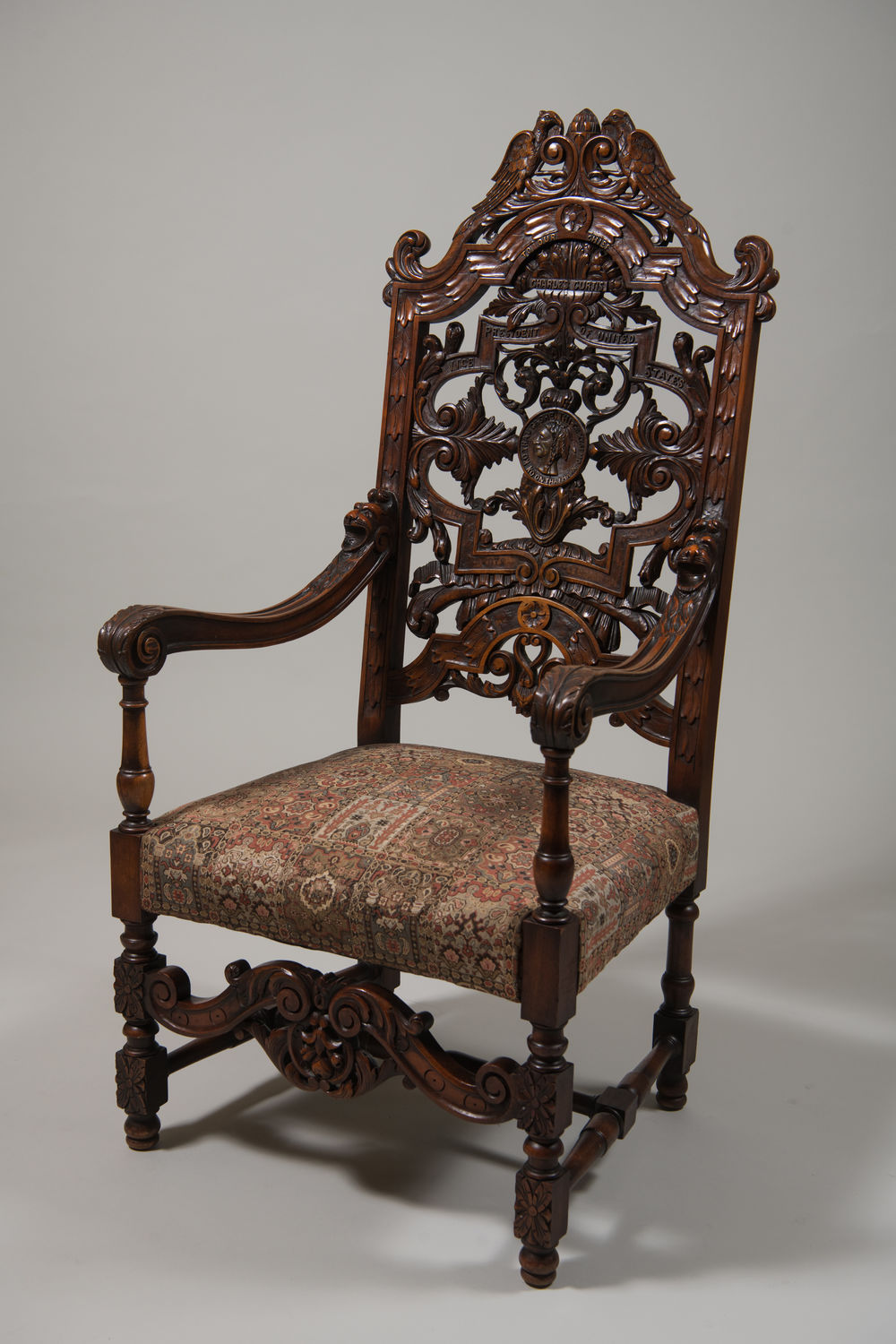
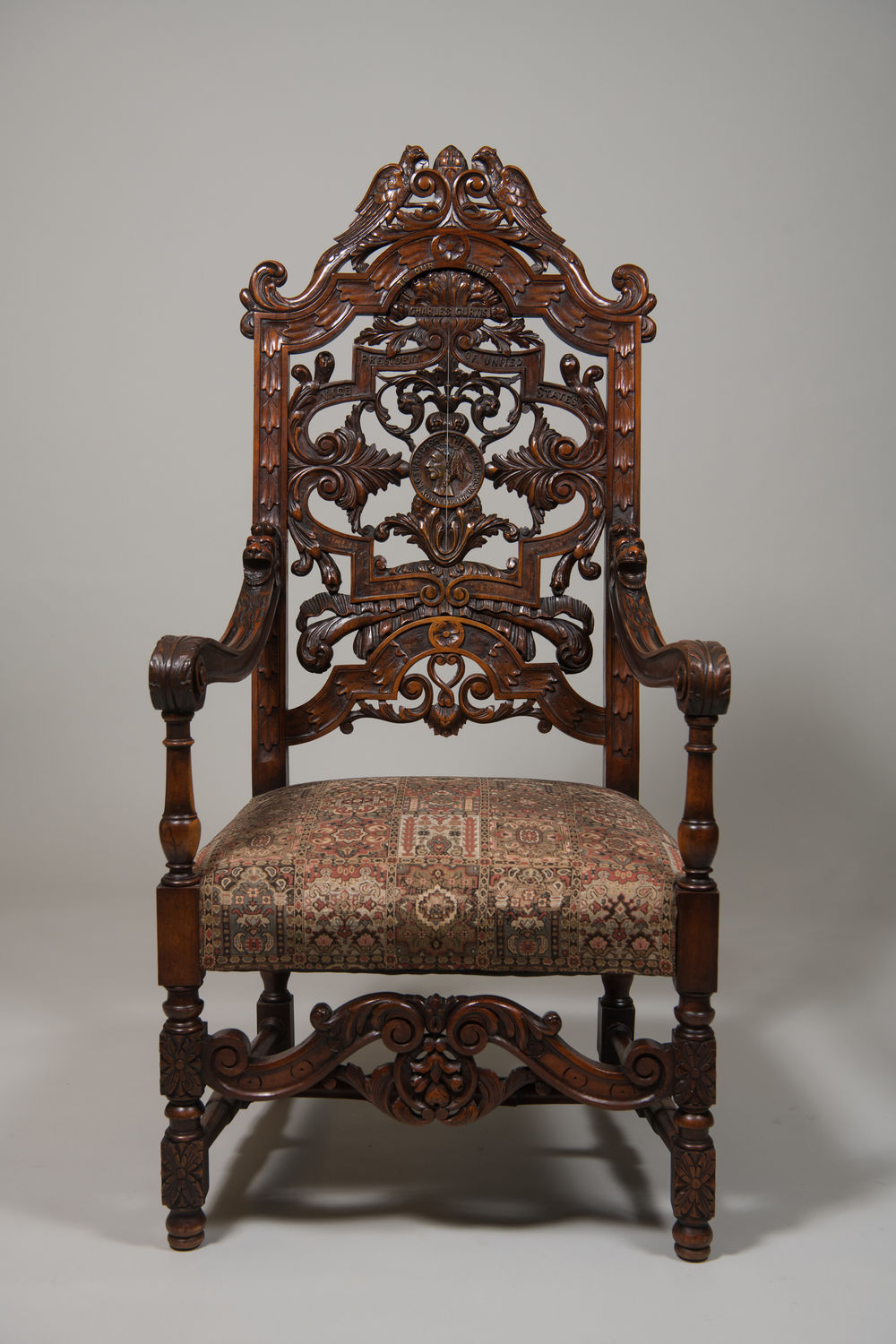
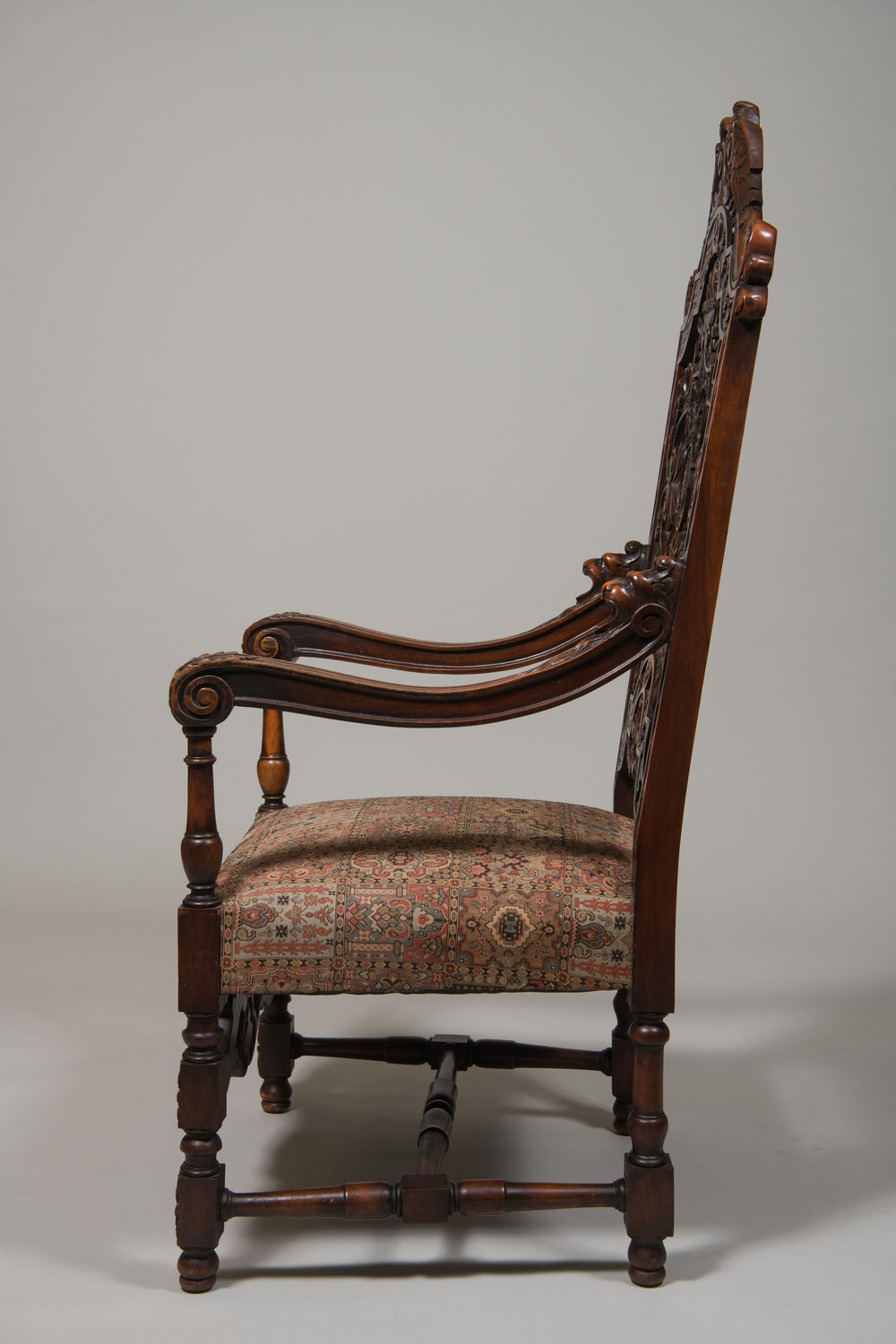
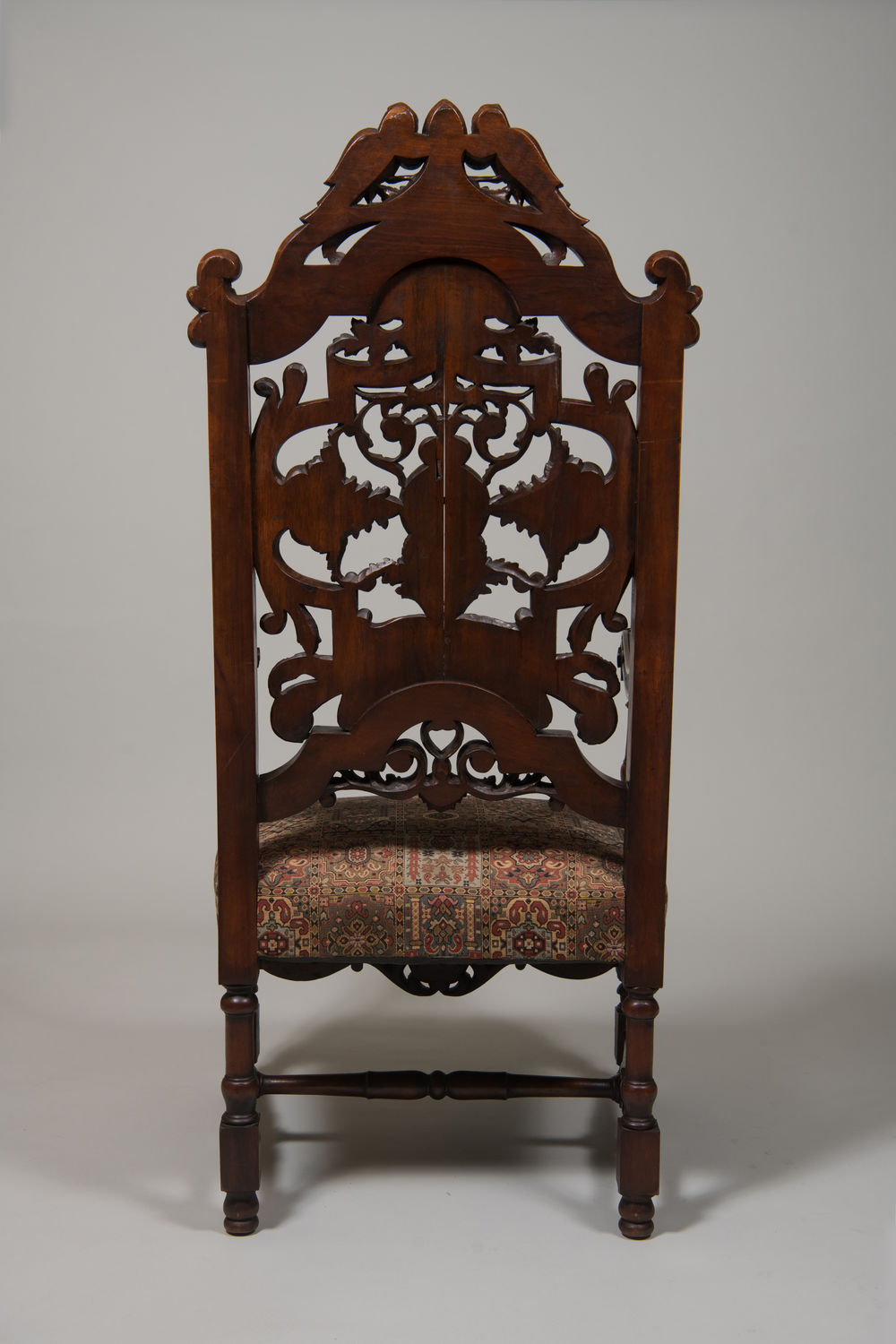
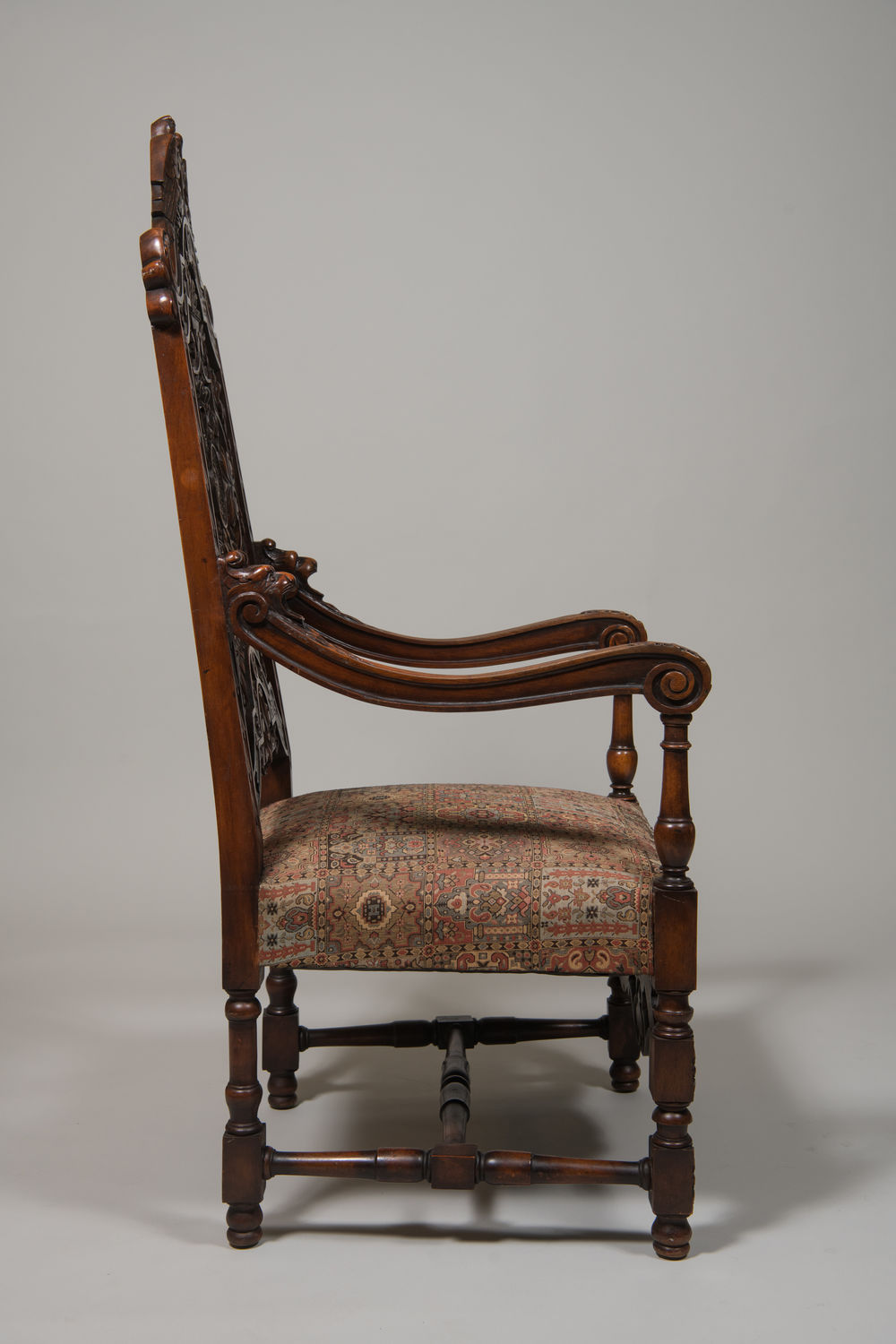
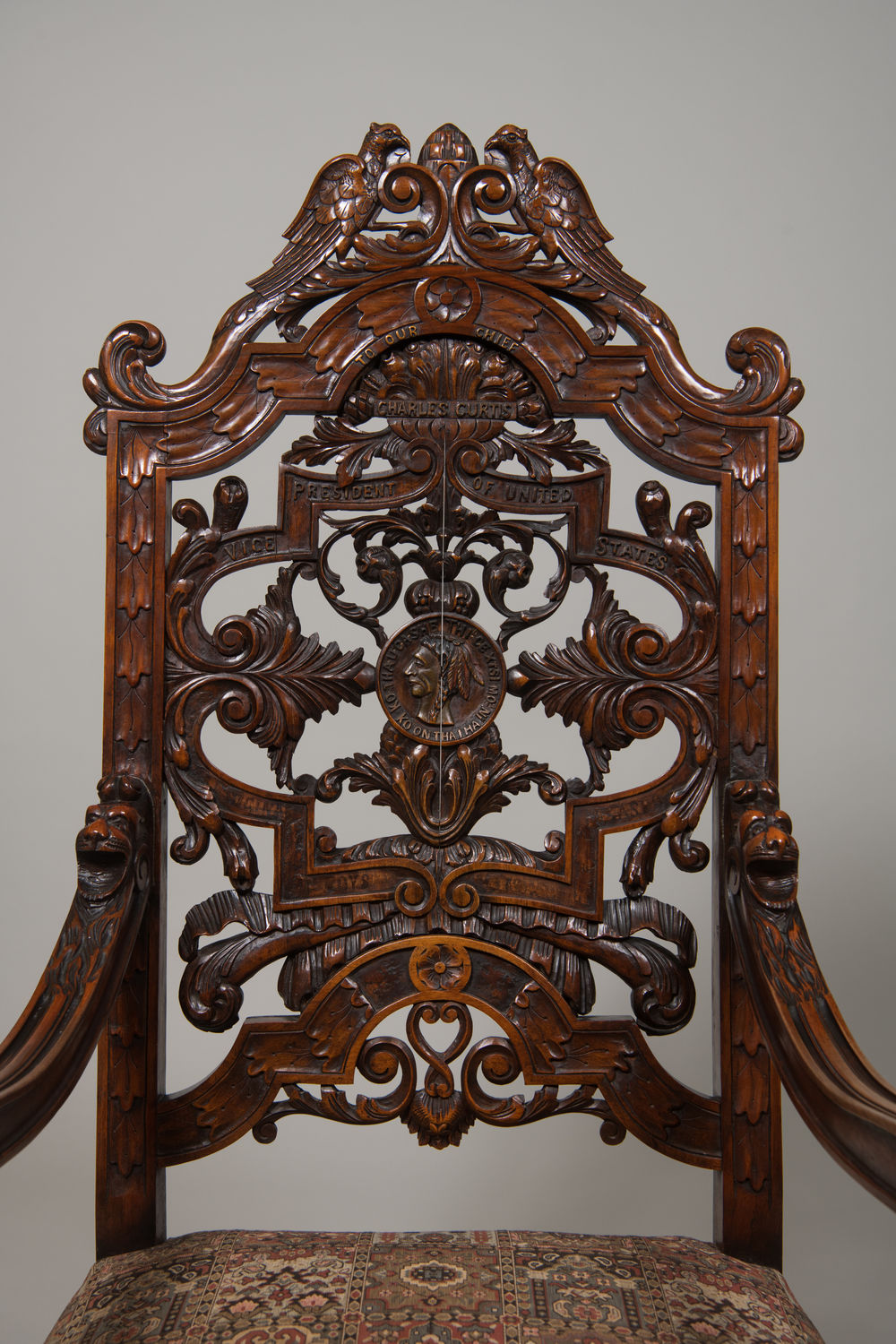
| Title | Chair, Ceremonial Arm |
| Artist/Maker | Unidentified |
| Date | Late 19th or early 20th century, 1929 altered |
| Medium | Walnut, fabric |
| Dimensions | h. 56.75 x w. 26.75 x d. 23 in. (h. 144.1 x w. 67.9 x d. 58.4 cm) |
| Credit Line | U.S. Senate Collection |
| Accession Number | 65.00160.000 |
Charles Curtis of Kansas used this ornate ceremonial armchair in his office in the Senate Office Building (now the Russell Senate Office Building) while serving as vice president of the United States from 1929 to 1933. A faded inscription on the lower rail of the chair back indicates that the chair was gifted to Curtis by political supporters known as the "Original Curtis Boys" and by Matthew Quay Glaser, president of the Curtis for President Club, an organization formed in 1927 to support then-Senator Curtis’s campaign to be the 1928 Republican presidential candidate.
The walnut armchair is elaborately carved with various flora and fauna, including a pair of birds on the crest-rail and lion heads on the arms. A central medallion on the backrest features a profile head of a Native American figure. Curtis, who was a Kaw tribal member, was the first Native American to serve as vice president. The inscription that surrounds the medallion is written in a combination of Osage and Omaha, two Dhegiha Souian languages that are very closely related to Kaw and would have been mutually intelligible at the time the chair was inscribed. Because Dhegiha Siouan languages were almost exclusively oral and did not have a consistent writing tradition, the inscription is recorded using a system developed by Francis La Flesche, an Omaha-speaking ethnologist in the Bureau of American Ethnology. It translates as "Friend, go in the best of health. This is our wish."